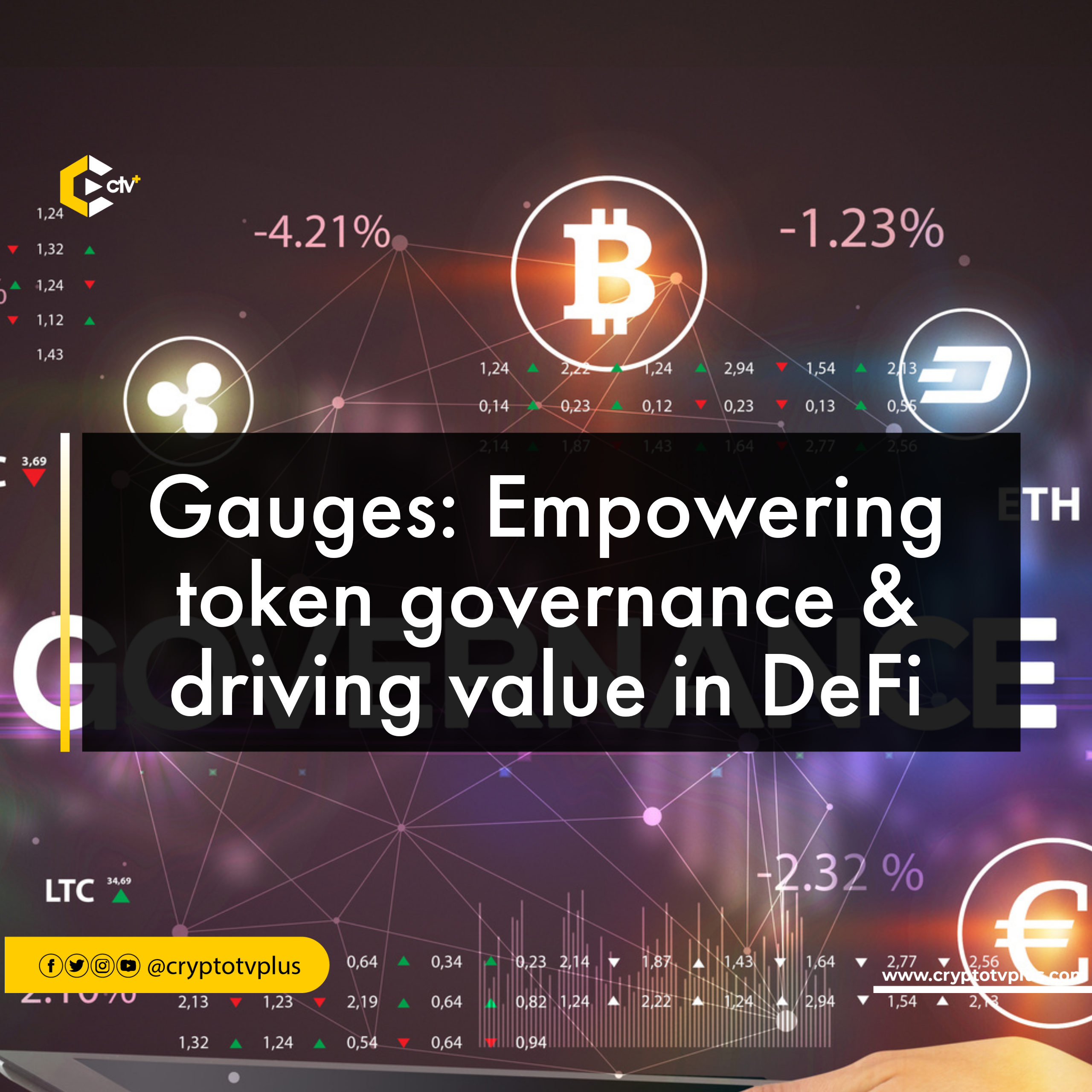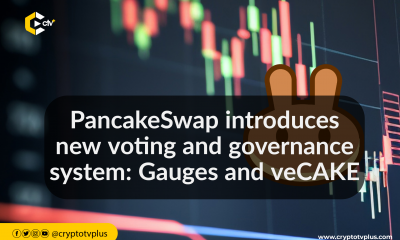Education
Gauges: Empowering token governance & driving value in DeFi

Over the past five years, Gauges have emerged as a fundamental governance innovation within the decentralized finance (DeFi) ecosystem. They have played a pivotal role in enabling token governance to directly allocate incentive budgets.
While initially applied to provide incentives for automated market maker (AMM) liquidity providers, the concept of gauges can be extended to various use cases. In this article, we will provide an overview of gauges, their significance in DeFi governance, and their ability to drive real economic value.
Evolution of Gauges as a Foundational Governance Innovation
As DeFi has evolved, the need for decentralized community development and decision-making processes has become increasingly apparent. Many crypto projects have encountered challenges in growing their ecosystems using traditional treasury models and centralized decision-making. Gauges address these issues by allowing communities to self-direct the growth of their ecosystems.
Gauges are mechanisms that allow token governance to directly allocate incentive budgets. The primary purpose of gauges is to incentivize and reward participants in the DeFi ecosystem, particularly AMM liquidity providers. By allocating incentives through gauges, token holders have the power to influence and drive the growth of the ecosystem.
However, the concept of gauges is generalizable, meaning that incentive budgets can be allocated to various other activities within the DeFi ecosystem, such as protocol improvements, user acquisition, and community engagement.
Advantages of Gauges in Governance
Decentralizing Community Development
One significant advantage of gauges is their ability to decentralize community development. Traditional treasury models often struggle to effectively grow ecosystems due to centralized decision-making processes. Grant programs, for instance, may lack legitimacy and efficiency. Gauges address this challenge by empowering the community to self-direct the growth of the ecosystem. With gauges, token holders have a say in allocating incentives, fostering a decentralized and inclusive approach to community development.
Facilitating Ease of Participation
Another key advantage of gauges is that they make it easier for participants to engage and contribute. Each token holder can allocate their share of incentives, eliminating the need for complex quorum requirements or majority consensus to effect change. Changes can be made at frequent intervals, allowing participants to act on their own timelines. This inclusivity and flexibility in decision-making processes enable broader participation and empower individual token holders to have a direct impact on the governance of the protocol.
Driving Token Value
By handing key economic decision-making power to token holders, gauges incentivize holding and staking tokens. Token holders are not only able to influence the growth and development of the ecosystem but also benefit from the economic value associated with their participation.
Notable Examples of Gauges
Gauges, alongside other governance-related innovations like vote escrow and locked liquidity, represent a set of crypto-native “governance legos.” These legos are modular building blocks that can be combined and integrated to power the next generation of DeFi protocols. Let’s take a look at how some protocols execute gauges.
Curve Finance: Pioneering Gauges and Vote Escrow
Curve Finance is recognized as one of the pioneers of gauges in the DeFi space. It introduced what we now know as the Vote escrow.
When individuals choose to lock their governance tokens, they are rewarded with a certain number of vote-escrowed tokens (veTokens) in exchange. These veTokens are typically non-tradable and solely serve the purpose of granting governance rights to the token holders. It is common for a specific duration of time to pass before users can engage in governance activities, ensuring that they are more likely to make decisions that benefit the platform in the long run.
Throughout this period, the tokens are held in an escrow account and generally cannot be traded or utilized for any other intent. Once the escrow period concludes, the tokens are released and can be used to cast votes. The length of the escrow period may vary depending on the particular protocol and the nature of the decision at hand.
Alongside other key innovations such as vote escrow, Curve introduced the gauge mechanism to control the flow of incentives to AMM liquidity providers. Currently, approximately $3.1 million of CRV incentives are allocated weekly through the gauge system.
Frax Finance: Extending Gauges for Long-Term Commitments
Frax Finance was one of the early adopters of gauges and expanded the concept by allowing liquidity providers to form long-term commitments for additional rewards. Its gauge allows users to deposit assets and receive yield in FXS tokens to incentivize strategies like FRAX lending and liquidity growth. The FXS allocation to each gauge is called its “gauge weight.” veFXS holders can vote to control the future FXS emission rate.
The gauge system reduces the influence of FRAX pairs with sell-offs and favours LP providers who stake rewards to increase their gauge weight. Frax Finance aimed to enhance the stability and sustainability of liquidity provision by incentivizing long-term commitments. Presently, approximately $260,000 of FXS incentives are allocated weekly through gauges.
Balancer: Innovative Gauges Beyond Liquidity Incentives
Balancer built upon Curve’s gauge mechanisms and introduced innovative variations. Balancer created different types of gauges that extended beyond incentivizing liquidity. These gauges enabled the protocol to incentivize various activities and behaviours within the ecosystem, thereby driving community engagement and value creation. Currently, approximately $634,000 of BAL incentives are allocated weekly through the Balancer Gauge System.
Euler: Gauges in Lending Markets
Euler made a significant contribution to the gauge landscape by being one of the first major lending markets to implement gauges. Demonstrating the applicability of gauges beyond AMM swapping, Euler utilized gauges to incentivize lending activities.
Prior to an exploit earlier this year, approximately $72,000 of EUL incentives were being allocated weekly through gauges.
SushiSwap: Community Adoption through Liquidity Incentives
While not precisely a gauge, SushiSwap employed a similar liquidity incentive scheme known as the “Menu of the Week.” This initiative successfully drove early community adoption by incentivizing liquidity providers to participate actively.
Challenges and Considerations
Determining Suitable Activities for Incentives
One of the key challenges in implementing gauges is deciding which types of activities should be incentivized. While gauges empower token holders to allocate incentives, it is important to carefully evaluate the activities that align with the long-term goals and sustainability of the protocol. If a decentralized autonomous organization (DAO) votes to incentivize a liquidity pool for a poorly performing token, it can have negative consequences for the DAO and the ecosystem.
Risk Management in Decision Making
Although gauges enable decentralized decision-making, it is essential to consider the potential risks associated with the allocation of incentives. Token holders must assess and mitigate risks to protect the interests of the community and ensure the long-term viability of the protocol. Effective risk management practices, such as thorough due diligence and ongoing monitoring, are crucial in maintaining the integrity and stability of the governance process.
The Future of Gauges and Governance Legos
Gauges as a Key Feature of Onchain Communities
Gauges have emerged as a key feature of healthy and active on-chain communities. The ability to involve token holders in ecosystem growth and decision-making has proven to be highly valuable in driving the success of DeFi protocols. As more projects recognize the benefits of gauges, they are likely to become a standard component of token governance systems.
Expansion to Layer 1 and Layer 2 Tokens
While gauges have primarily been associated with Ethereum-based protocols, there is growing interest in applying this concept to Layer 1 and Layer 2 tokens. Layer 1 protocols, such as Bitcoin, and Layer 2 solutions, such as Optimism and Arbitrum, could benefit from integrating gauges into their governance frameworks. By doing so, they can enhance community involvement, drive economic value, and foster the growth of their respective ecosystems.
Conclusion
It has become evident that we are witnessing a transformative shift in how financial systems operate. Gauges have emerged as a powerful tool for decentralized decision-making, community involvement, and economic value creation. They have enabled protocols to overcome challenges related to ecosystem growth, participation, and legitimacy, fostering a more inclusive and transparent financial ecosystem.
The future of DeFi governance lies in continuous innovation, collaboration, and a commitment to addressing the evolving needs of stakeholders. It is crucial for protocols to embrace a culture of experimentation, actively seek user feedback, and iterate on governance mechanisms to ensure their effectiveness and alignment with the goals of their communities.
The journey ahead is filled with challenges and opportunities, and it is our collective responsibility to shape the future of DeFi governance for the benefit of all participants and society as a whole.
Read also:
https://cryptotvplus.com/2023/05/challenges-of-decentralized-decision-making-are-daos-truly-decentralized/

























1 Comment